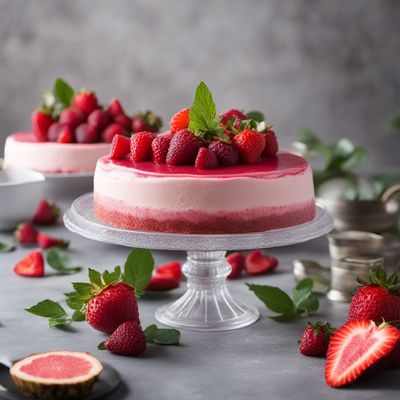
Ingredient
Other edible flowers
Blossoming Delights: Exploring the World of Edible Flowers
Other edible flowers encompass a wide variety of blooms that can be used in cooking and baking. These flowers come in various shapes, sizes, and colors, ranging from dainty pansies to vibrant marigolds. With their delicate and often fragrant petals, they add a touch of elegance and sophistication to any dish. Edible flowers can be used as a garnish, infused into oils or syrups, incorporated into salads, or even crystallized for a sweet treat. Their flavors can range from subtly floral to slightly peppery or even citrusy, depending on the type of flower. The texture of edible flowers can vary as well, with some being soft and delicate, while others have a slightly crunchy or chewy texture. Their appearance adds a pop of color and visual appeal to any plate, making them a favorite among chefs and home cooks alike.
Origins and history
The use of edible flowers in culinary practices dates back centuries and can be traced to various cultures around the world. In ancient China, for example, chrysanthemums were used in teas and soups for their medicinal properties. In Europe, during the Renaissance period, flowers such as violets and roses were commonly used in desserts and confections. Native American tribes also incorporated edible flowers like nasturtiums and daylilies into their traditional dishes. Today, the use of edible flowers has become more widespread, with chefs and home cooks experimenting with different varieties to enhance the visual and sensory experience of their creations.
Nutritional information
Edible flowers are low in calories and are a good source of antioxidants, vitamins, and minerals, depending on the specific flower. They can provide a burst of color and flavor to dishes without adding significant calories.
Allergens
Some individuals may have allergies or sensitivities to certain types of flowers, so it is important to exercise caution and consume edible flowers in moderation, especially if you have known allergies to pollen or plants.
How to select
When selecting edible flowers, look for blooms that are fresh, vibrant, and free from blemishes or signs of wilting. Choose organically grown flowers whenever possible to avoid any potential pesticide residues. It is also important to ensure that the flowers have not been treated with any chemicals or pesticides that are not safe for consumption.
Storage recommendations
To maintain the freshness of edible flowers, gently rinse them under cold water to remove any dirt or debris. Pat them dry with a paper towel and store them in a sealed container lined with a damp paper towel. Place the container in the refrigerator and use the flowers within a few days for the best quality and flavor.
How to produce
Edible flowers can be grown in home gardens or containers, provided the proper care and attention. Choose flower varieties that are known to be edible and suitable for your climate. Follow proper gardening practices, including providing adequate sunlight, water, and soil conditions. Harvest the flowers when they are fully bloomed but before they start to wilt.
Preparation tips
Before using edible flowers, remove any green parts or sepals, as they can be bitter. Gently wash the flowers to remove any dirt or insects. Use them as a garnish on salads, desserts, or cocktails, or incorporate them into dishes by adding them towards the end of the cooking process to preserve their delicate flavors and appearance. When using edible flowers in recipes, start with a small amount and gradually increase to achieve the desired flavor intensity.
Culinary uses
Edible flowers are commonly used as a decorative element in salads, desserts, and beverages. They can be used to garnish cakes, pastries, and cocktails, adding a touch of elegance and visual appeal. Edible flowers can also be infused into oils, vinegars, or syrups to impart their flavors into dressings, marinades, or sauces.
Availability
Edible flowers can be found in various regions and countries around the world. However, their availability may vary depending on the local climate and growing seasons.
More ingredients from this category
Recipes using Other edible flowers » Browse all

Haute Neri Yokan Delight
Silken Delight: A Haute Twist on Neri Yokan

Haute Konkonte Delight
Savory Konkonte Medley with a Haute Twist

French-inspired Canapé Delight
Elegant Bites: French-inspired Canapés to Delight Your Palate

Putian-style Cream Cake
Silky Delight: Putian-style Cream Cake

Fiori Frittata
Savory Blossoms: A Delightful Twist on the Classic Frittata

Platinum Pudding Delight
Golden Indulgence: A Luxurious Twist on Platinum Pudding

Congolese Fraisier
Tropical Delight: Congolese Fraisier with a Twist

Bolivian-inspired Varaždinska Torta
Bolivian Delight: A Fusion of Flavors in Varaždinska Torta

Hwajeon - Korean Flower Pancakes
Blooming Delights: Korean Flower Pancakes

Nouvelle Tiramisù
Elevated Layers of Delight: Nouvelle Tiramisù

New York-Style Cheesecake
Decadent Delight: Haute Cuisine Cheesecake

Homemade Almond Calisson
Delicate Almond Delights: Homemade Calisson Recipe